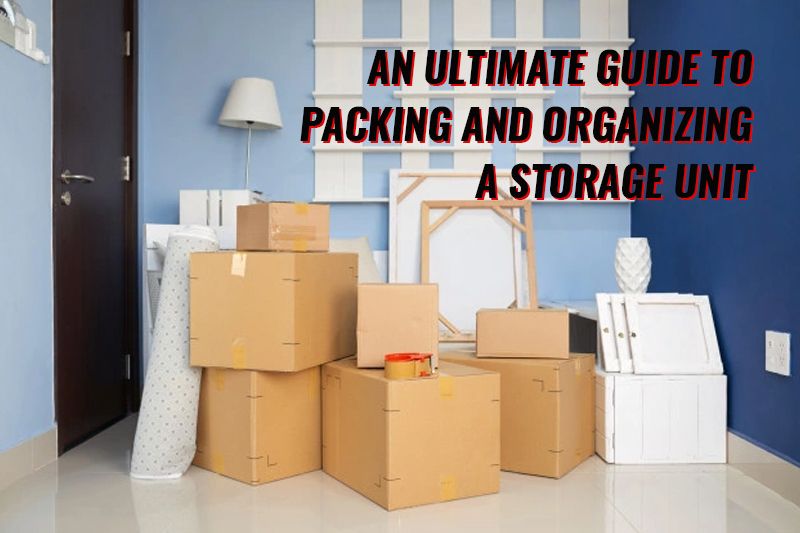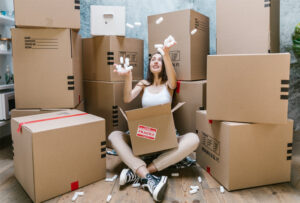You are moving to a new area, moving to a smaller house, or clearing out clutter. It is important to learn how to organize and pack a storage unit. This will allow you to store more furniture, keep winter clothes out of the way and hide your extra fridge. Learn how to protect furniture and maximize space. And how to prevent your favorite sweater from getting lost in a sea of boxes.
What do I need to pack my belongings in a storage unit for the winter?
Before you can learn how to organize and pack a storage space, it is important to make sure that your storage unit is ready for you to store your belongings. Here are the steps to organize and pack a storage space.
You should ensure that you have enough storage space.
Before you begin packing your storage unit, double-check that you have enough space. It is not a good idea to pack and organize your storage unit, only to find half of your belongings missing when you return home.
Make a list of all the furniture you plan to pack in your storage unit. Also, make a rough estimate of how many boxes and other items you will need to fit it. Compare the space you have available to these items with how much space they will take up. Do you have enough space? Or do you need to prioritize and get rid of certain items? You can pack a lot into a storage unit. All you have to do is the plan.
Make sure your storage unit has climate control.
How you pack and organize your storage space will depend on whether it is climate controlled. You’ll be able to pack your belongings faster if your storage unit is located indoors and climate-controlled. Climate control technology protects your belongings against mildew and other weather-related damage. If your storage unit does not have climate control, you should consider whether it is worth taking the chance to store expensive clothes, electronic items, or instruments. These items should be stored in a storage unit that is climate-controlled.
Clean your storage unit thoroughly.
Before you decide how to pack your storage container, ensure it is clean and free from damage. Check the walls and roof of your storage unit for cracks, sharp edges, and leaks. Next, sweep the floor. You can also scrub the floor and walls with soap or disinfectant if you are extra careful. To protect your belongings from pests and weather, you can place a tarp on your unit if it isn’t climate-controlled.
Make sure to clean everything in the storage unit.
It’s more likely that something will get dirty if it’s stored while it’s still damp. Be sure to clean, dust, and wash your items before you start to plan how to organize and pack your storage unit. These are some tasks you should keep in mind.
- Wash your clothes and take out any stains.
- Wipe down and wax wooden furniture
- Clean leather furniture using a leather cleaner or gentle shampoo
- Clean fabric-covered furnishings with an antibacterial cleaner, and allow it to dry completely
- Wipe down the appliances inside and out, and, if necessary, use bleach or vinegar to finish off.
- Take inventory of what you have
Write down a list of everything that will go into your storage unit before they get lost in the sea of boxes. You won’t need to waste time trying to find your winter sweater in the closet. Write down everything that will be moved before you start organizing your storage unit.
- Photographs of serial numbers, model numbers, and brand logos when appropriate
- A description of the item.
- If expensive items are stolen, their relative monetary worth will be used.
- What and where did you pack the item? In a box, storage container, or another way?
- Name and address of storage facility
- How do I pack my belongings to go into a storage facility?
If you don’t know the proper way to pack and organize your storage unit, your belongings could easily get damaged. These tips will help you pack everything in your storage unit.
How to pack furniture for a storage unit
You should take extra care when packing furniture for storage. Avoid plastic packaging materials, unless you are using bubble wrap to protect a lamp or picture frame. This can cause furniture to become dampened and mildew-prone. Use old sheets, drop cloths or quilts to drape furniture. Tape coverings that are more fragile should not be applied directly to furniture. You could endanger the fabric or paint you are trying to protect by removing it.
How to pack appliances for a storage unit
If you are packing appliances for storage, make sure to drain all liquid, take out glass shelves and fragile parts (to pack separately) and don’t plug it in until it is in its final place. Baking soda can be placed inside the appliance to prevent odors. Once the appliance is in its new home, prop the door open. Your appliances’ electronic and mechanical parts are susceptible to rusting and fissures. A unit that is not climate controlled may not be the best option.
How to pack electronics for a storage unit
Pay attention to electronics when packing a storage unit. Properly pack electronics by using their original packing materials and storing them in a climate-controlled unit. Before unplugging wires, label and take photographs. Wrap electronics in packing paper or household linens so that they will not be damaged if the packaging is damaged.
How to pack clothes for a storage unit
Plastic containers with clip-on lids are the best way to pack clothes for storage units. This will protect your clothes from moisture, mildew and dust. To prevent moth damage and prevent musty odors, you should pack cedar balls along with your clothes. You want to make sure that your clothes are clean and folded properly so you don’t have a second time washing them.
How do you organize your storage space?
You now know how to pack a storage container. Now you must learn how to organize it. There are many ways to organize your storage unit. Choose the one that best suits your needs.
Priority organize your storage unit
Do you remember the inventory list? Re-read it and mark the items that you will be using most frequently from your storage unit. Are you going to need your winter coats within a few weeks of getting them? Are you going to be using your golf clubs only once a month or will you need them every other week? You should keep any items that you may need frequently at the front of your storage container. You can store your grandmother’s dining room table in the back corner of your storage unit if you don’t plan to use it until you move into your new home in two years.
Use descriptive labels to organize your storage unit
Labels are essential if you hope to find what you need in your storage unit. Labels like “kitchen” don’t have to be very precise. It is possible to end up with several or five kitchen boxes, and not be able find the cookie cutters that you need. Instead of labeling boxes with “kitchen”, write “cookie cutters”, pancake griddles, measuring cups, mixing and bowls.”
Create a map to organize your storage unit
A storage unit map will make it easier to find what you need. Before you move any items in, make a map of your storage unit. Next, plan a path through the storage unit to make it easy for you to access what you need. You can easily locate what you are looking for in minutes if you have a map.
How can I make my storage unit more spacious?
Now you are familiar with how to pack and organise your storage unit. What if you have too many things and don’t want your storage unit to grow? Here are some ways to maximize the space in your storage unit.
Start at the bottom to maximize storage space
To maximize storage space, start at the bottom and work your way up. Start by putting your largest boxes on the bottom. Next, move up to the top layer and place your lightest items. Be sure to leave enough space for people to access your storage unit.
Install shelving to maximize your storage space.
You can put shelving in your storage unit. Hanging shelves can be temporarily drilled into the wall or large metal or plastic shelves that are on the ground. These shelves can be used to organize unusually shaped or large items that don’t fit into boxes.
Furniture can help maximize storage space.
Take furniture apart before packing it for storage. If you have fragile or large items, such as dresser drawers, place them in smaller boxes. Be creative!
You now know how to pack and organise a storage unit. Do you have any other tips? We’d love to hear from you in the comments!




